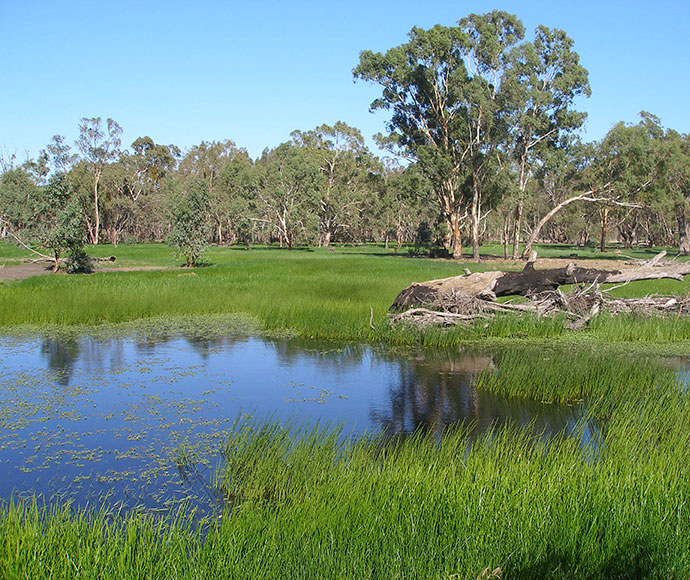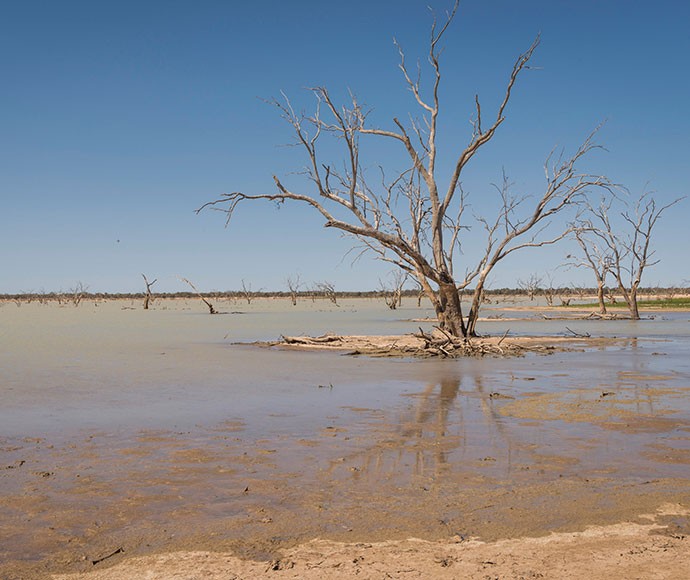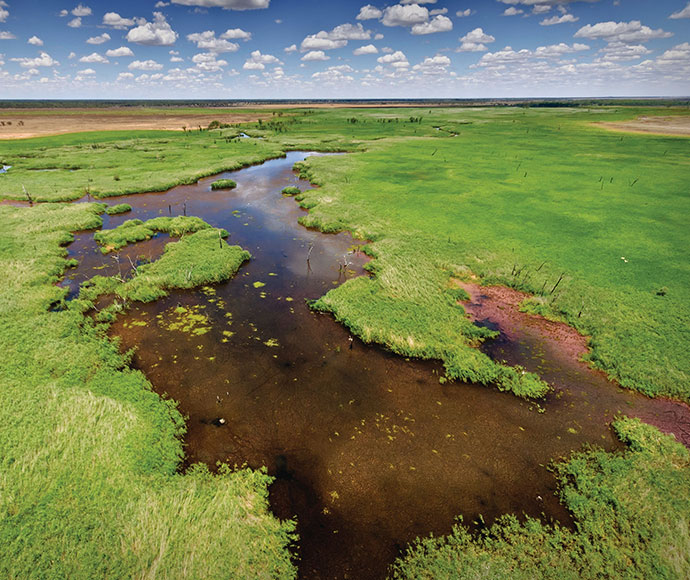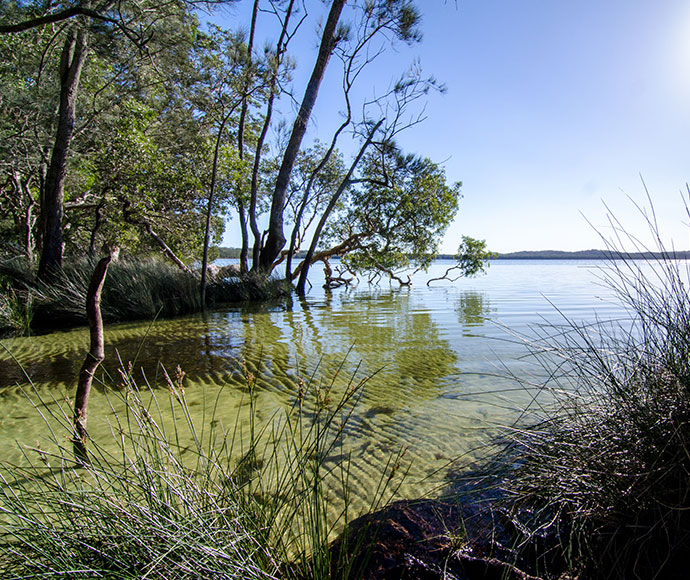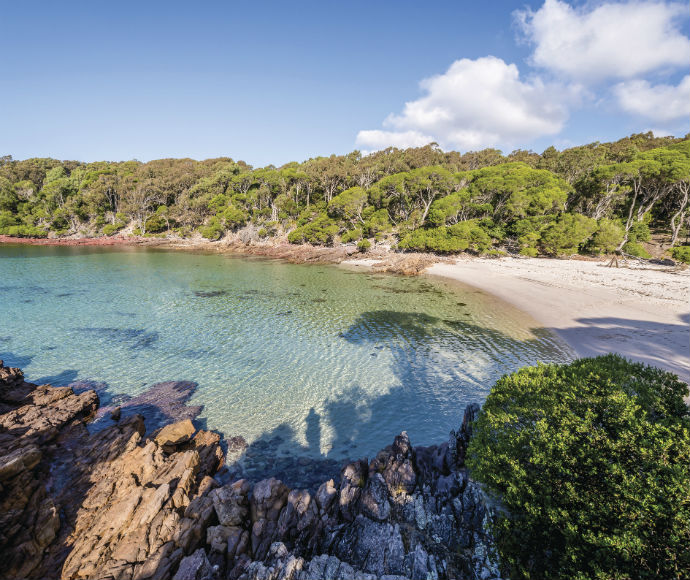Wetlands are areas of land covered or saturated with fresh, brackish or salt water that is generally still or slow moving. The water can also sit just below the surface.
An area doesn’t need to be permanently wet to qualify as a wetland. The flooding or saturation can also happen cyclically or intermittently.
The area just needs to be wet for long enough for its plants and animals to be adapted to – or even dependent on – wet conditions for at least part of their life cycle.
Many wetlands in inland New South Wales can be dry for 10 years or longer before being flooded after heavy rain and then stay wet for several years. This allows wetland plants and animals to regenerate and reproduce.
Where wetlands are found
There are more than 20,000 wetlands across New South Wales.
In 2003, mapped wetlands covered about 4.5 million hectares of New South Wales – that’s about 6% of the state.
- Some of the biggest are in the Murray−Darling Basin, such as the Macquarie Marshes near Dubbo.
- Most of our other wetlands are on the coast, including estuaries and coastal lakes and lagoons.
- There are a few freshwater wetlands on the tablelands and in the highest alpine regions, such as the lakes in Kosciuszko National Park.
Types of wetlands
Wetlands are diverse and have unique characteristics and wildlife, depending on where they are. They can occur in a wide range of habitats, including rivers, floodplains, lakes, estuaries, swamps, bogs, billabongs, marshes and seagrass beds.
Wetlands can be classified into 5 types:
- Riverine wetlands are around rivers, creeks, streams and other waterways.
- Lacustrine wetlands are around freshwater lakes and reservoirs.
- Palustrine wetlands are inland freshwater areas that generally have plenty of trees and other vegetation.
- Estuarine wetlands are around estuaries.
- Marine wetlands are along the coast.
Riverine wetlands are found around rivers, creeks, streams and other waterways. They include floodplains and marshes that are fed by these freshwater channels.
They may be permanently wet, or they may dry out during periods of low rainfall.
The Murray−Darling Basin has many riverine wetlands, including:
- the internationally significant Millewa Forests
- floodplain wetlands such as Mercedes Swamp and Two Bridges Wetlands near the Murrumbidgee River.
Lacustrine wetlands are inland freshwater lakes, reservoirs and the areas around them.
Like riverine wetlands, they may be permanently wet, or they may dry out during periods of low rainfall.
Examples in New South Wales include:
- Lake Pinaroo in Sturt National Park
- alpine lakes in Kosciuszko National Park
- upland lakes on the New England Tableland
- Menindee Lakes near Broken Hill.
Palustrine wetlands are inland areas of non-tidal fresh water that have plenty of plants. They include inland floodplain swamps, marshes, shrublands, bogs and fens.
Examples in New South Wales include:
- Macquarie Marshes north of Dubbo
- Millewa Forests near Deniliquin.
Some types of palustrine wetlands, such as inland floodplain swamps, can be in a dry phase for several years before they receive enough water to change to their wet phase. They can exist next to or even within lacustrine, riverine or estuarine systems.
Estuarine wetlands are found around estuaries where rivers meet the ocean. They may be partly enclosed by land but they open out to the sea.
They are tidal and often have freshwater inflows from rivers, so they have varying levels of salinity (salt content). They include mangrove swamps and saltmarshes.
Examples in New South Wales include:
- Myall Lakes near Bulahdelah
- wetlands in Botany Bay
- lower Hunter River near Newcastle
- Tweed Estuary.
Marine wetlands occur along the length of the NSW coast. They cover the ocean area extending out from the coastline to 6 metres below the lowest tide. They include ocean beaches, shallow ocean waters and rocky headlands and islands.
